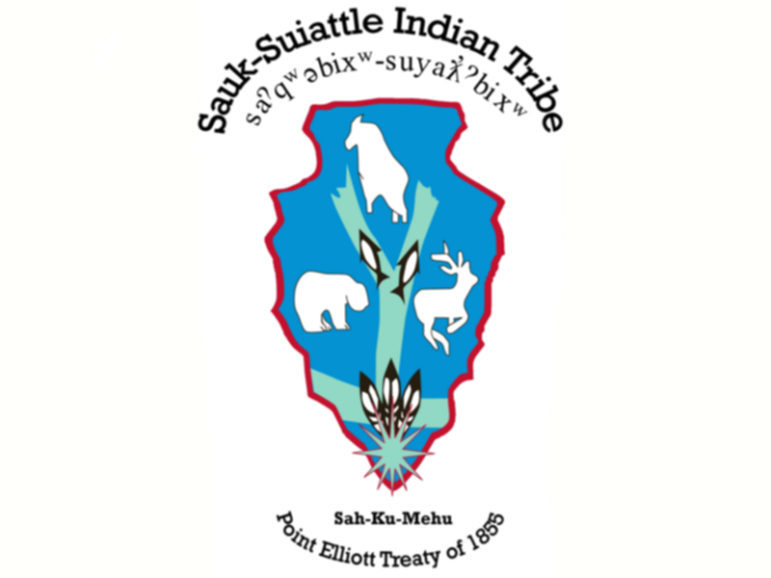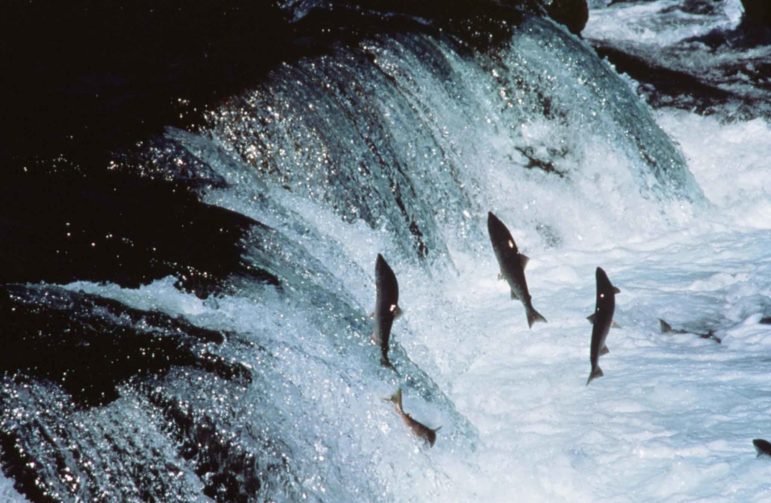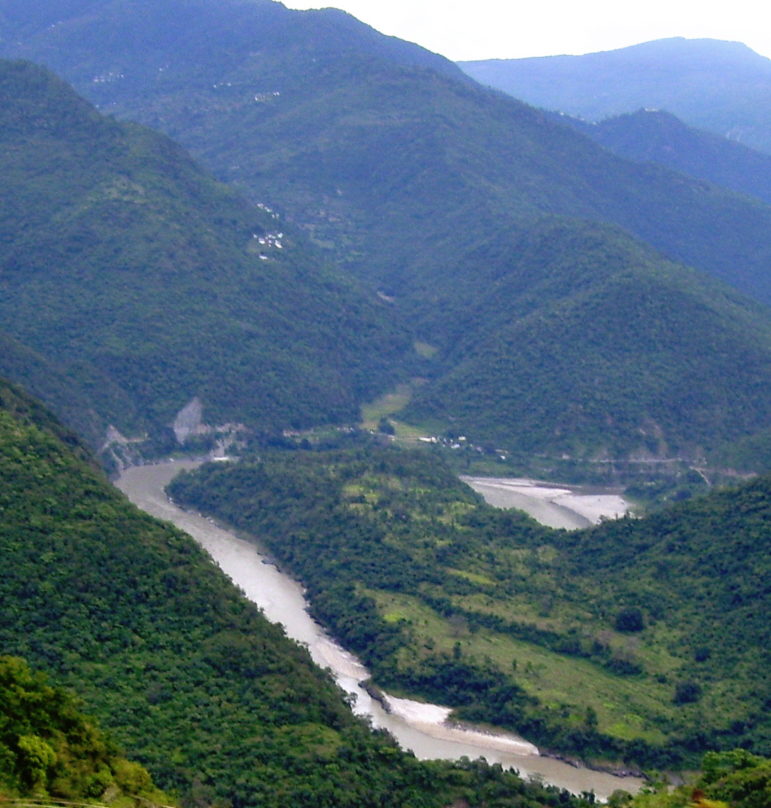TWH – On March 9, The Guardian reported that the Sauk-Suiattle Indian Tribe sued the City of Seattle, Washington. The Tribe has brought suit in a Sauk-Suiattle Tribal Court, rather than a U.S. court, to establish the salmon’s right to “to exist, flourish, regenerate, and evolve.” In the Sauk-Suiattle suit, the Tribe is suing on its own behalf and as guardian of the Skagit River salmon.

This case involves the legal theory, “the rights of nature.” The Columbia Climate School explained this legal theory as a belief that “an ecosystem is entitled to legal personhood status and as such, has the right to defend itself in a court of law against harms, including environmental degradation caused by a specific development project or even by climate change.”
Some TWH readers may think of this legal theory as animism in legal “drag.”
The Guardian reported that the Skagit River salmon are on the Endangered Species list. Since people dammed the rivers, the salmon populations have declined.
The Sauk-Suiattle call the Skagit river salmon, “TsuladxW.” It plays a critical role in their ceremonies and diet. Its loss would threaten the continuation of their culture.
The Tribe has charged that the dams in the Skagit River, owned by the city of Seattle, prevent salmon from migrating between the ocean and freshwater. The lifecycle of the Pacific salmon depends on that migration.
The salmon migration
Salmon lay their eggs in freshwater rivers and return to those same rivers to spawn. After hatching, salmon then swim downstream out to the ocean. After several years in the ocean, salmon reach sexual maturity. They then return to spawn, swimming upstream to those same freshwater river systems. Sometimes that journey involves dramatic leaps upward. Salmon, however, cannot leap higher than a dam.

Salmon on their way to spawn – Image credit: Marvina Munch, U.S. Fish and Wildlife Service – Public Domain
Ecoforestry reported that salmon migration plays a key role in land and river ecologies of the Pacific Northwest. Bears migrate from their forests to riverbanks to feed on the salmon. These two migrations fertilize forest shores.
Bears carry the captured salmon back into the forest to eat. They only eat about half of the fish. Crows, eagles gulls, and eagles feast on the bear’s leftovers. The third wave of feasters includes beetles, flies, and other insects.
Salmon have absorbed a high concentration of nitrogen from the ocean. When the animals, birds, and insects that ate the salmon defecate, they fertilize the forest soil with nitrogen from the salmon. Researchers have found that the forest has more growth in those areas where bears eat the salmon. The salmon and bear migrations fertilize the forests of the Pacific Northwest with nitrogen from the Pacific.
Native American Sovereignty
Jack Fiander, lawyer and tribal member, told The Guardian that the Sauk-Suiattle have always known that TsuladxW have rights. Fiander saw the issue as rooted in Native American sovereignty. He said, “People need to know that these are our laws and if you come into our territory and do things that affect us you should be familiar with our laws and show us respect.”
This ancestral belief is critical as a tribal court will be hearing this case.
The Center for Democratic and Environmental Rights (CDER) has been involved in many rights of nature cases. The Wild Hunt contacted CDER via e-mail to clarify the role of Tribal Courts. Thomas Linzey, Senior Legal Counsel CDER, said that “tribal courts can apply both written law and unwritten, or customary law. U.S. courts mostly apply written law, although there is an area of ‘common law’ which can be unwritten as well.”
CDER reported that in 2017, the indigenous White Earth Nation in Minnesota recognized that manoomin (wild rice) had legal rights. In 2021, they filed suit in tribal court to enforce the rights of manoomin. An oil pipeline is threatening the wild rice crop. That pipeline would divert 5 billion gallons of water to build the pipeline.
CDER said that this “case has implications for tribes across the U.S. because any tribal nation which is a party to a treaty with the U.S. government could use this same mechanism to challenge permits issued on those ceded lands.”
Rights of Nature, a Global Movement
Charitable trusts can name a trustee to act in their best interests. This arrangement could provide a model for Rights of Nature to work.
The Columbia Climate School website reported that in 2017, four rivers in three countries were involved in Rights of Nature cases. Those three countries were Columbia, New Zealand (Aotearoa in the Māori language), and India
In 2018 in Columbia, ecology activists sued the government. They charged that “their fundamental rights to a healthy environment, life, health, food, and water were threatened by climate change” and deforestation in the Amazon. The Columbian Supreme Court ruled that “fundamental rights of life, health, the minimum subsistence, freedom, and human dignity are substantially linked and determined by the environment and the ecosystem.”
The New Zealand Parliament and the Indigenous Māori jointly set up a guardianship structure for the Whanganui River. The Māori would appoint one guardian and the New Zealand government would appoint the other.

Ganges river – Uttarakhand – Image credit: Fowler&fowler at English Wikipedia – CC BY-SA 3.0
CDER reported that in 2017, a court in Uttarakhand, India had ruled that the Ganges, the Yamuna, and glaciers had legal personhood. In 2019, the High Court of Punjab and Haryana ruled that all animals had legal personhood. In 2020 the high court declared Sukhna Lake had legal personhood.
Some Other Rights of Nature Cases
Ecuador has written the rights of nature into its Constitution. An English translation of chapter 7, Article 1 states that “Nature, or Pacha Mama, where life is reproduced and occurs, has the right to integral respect for its existence and for the maintenance and regeneration of its life cycles, structure, functions, and evolutionary processes.” It bans chemical, biological, and nuclear weapons.
Pachamama may sound familiar. In 2019 at the Amazon Synod in the Vatican, a statue of Pachamama was displayed in a Catholic church. Two men stole the statue and threw it into the Tiber river. The police later recovered the statues.
In 2021, a joint agreement between the Indigenous Innu Council of Ekuanitshit and the County Municipality of Minganie in Canada recognized the Magpie River as having rights.
In the U.S. in 2010, the Pittsburgh City Council used the rights of nature theory to justify banning fracking and shale gas drilling.
Limits to the Rights of Nature Legal Theory
The Columbian Climate Science Website acknowledged that recognition of legal personhood for non-humans has, so far, been largely symbolic. Enforcement has been problematic. Judicial decisions have to be enforced. Many of these cases have been vague on accountability.
Court decisions only affect those areas where the court has jurisdiction. Natural systems do not adhere to political boundaries. This could lead to one natural entity having many legal identities and statuses.
It may seem unusual to think of a river, an earthworm, or the Colorado basin as an entity with rights. Corporations, however, have been using personhood for over a decade to further their agendas.
The Wild Hunt is not responsible for links to external content.
To join a conversation on this post:
Visit our The Wild Hunt subreddit! Point your favorite browser to https://www.reddit.com/r/The_Wild_Hunt_News/, then click “JOIN”. Make sure to click the bell, too, to be notified of new articles posted to our subreddit.
